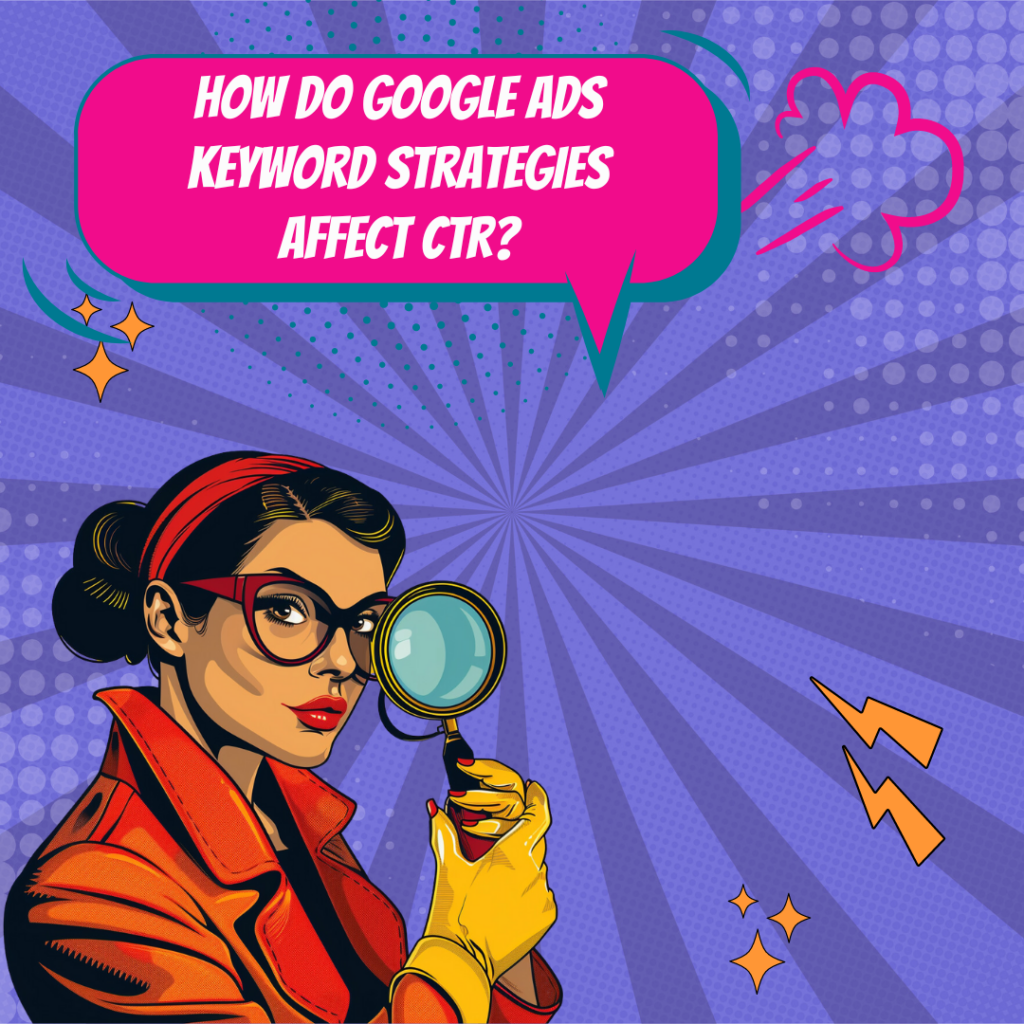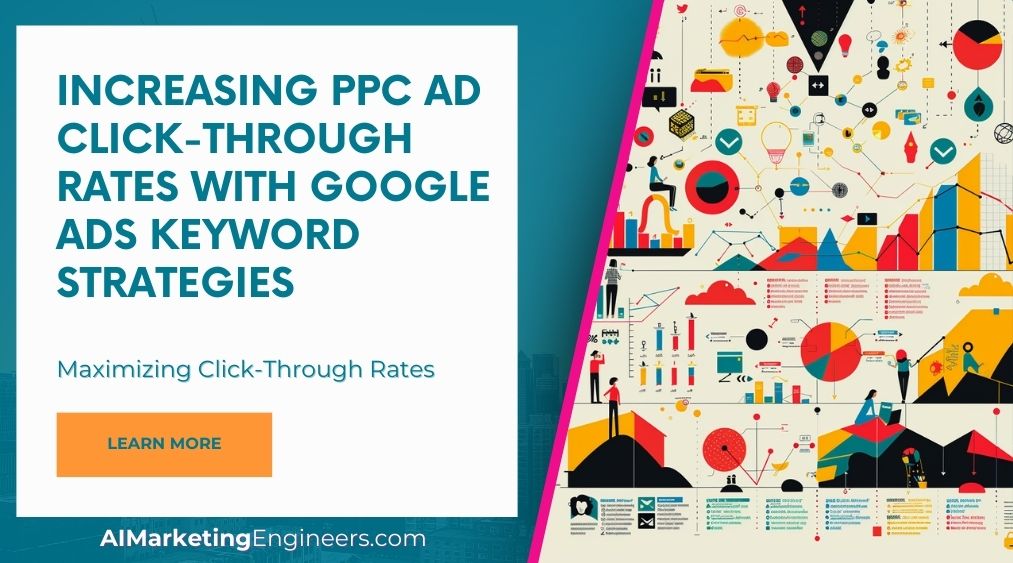Key Takeaways
✅ Target the Right Keywords: Zero in on specific keywords with a proven track record of attracting interest. Incorporating commercial intent keywords can propel your CTR – statistics show these focused keywords often lead to increased engagement and conversions. Equally important is cutting out irrelevant traffic with negative keywords, trimming down the wasted impressions.
✅ Optimize Ad Copy and Extensions: Clarity and simplicity in your ad copy are not to be underestimated; a concise message can mean the difference between a pass and a click. Ad extensions contribute to this clarity by giving your audience more context, with data showing that ads utilizing these features achieve higher visibility and interaction rates.
✅ Test and Refine: Evolution is the name of the game in PPC advertising. Regular testing of different ad formulations will highlight the highest performers, giving you the insights needed to refine your strategy. Analyze and adjust to remove low-performing queries as ongoing maintenance for a healthy CTR, which in turn can lower your campaign costs.

Introduction
Are you tapping into the full potential of your PPC campaigns? With every advertiser fighting for attention in the digital arena, standing out in Google Ads has never been more critical. Understanding Click-Through Rate (CTR) is an essential aspect of measuring success and ensuring your ads pack the punch they need to conquer competitors. Knowing that a higher CTR means more eyeballs and potentially more sales, who wouldn't want to boost that metric?
Google Ads Keyword Strategies are your secret weapon in this battle. They're not just about choosing words; it's about weaving a strategy that connects, captures, and converts. This article promises to navigate you through the noise with innovative keywords insights tailored to maximize your revenue, return on ad spend (ROAS), and overall return on investment (ROI). Stick around for actionable recommendations that will refine your game plan and help you score those coveted clicks leading to increased business growth. Let’s dive in and explore how these strategies can lead to tangible improvements in your campaigns.
Top Statistics
| Statistic | Insight |
|---|---|
| Average Click-Through Rate (CTR) for Search Ads: Approximately 2% to 3% for search ads. | Understanding this average provides a baseline for advertisers to assess the effectiveness of their campaigns relative to typical performance. |
| Impact of Ad Extensions: Can lead to a higher CTR due to larger, more targeted ad presentations. | Extensions offer additional information and options to users, convincing them to engage with your ad. This is crucial for ads to stand out in a crowded space. |
| Role of Negative Keywords: Helps in filtering out unwanted traffic and improving campaign targeting. | This is an often underutilized tactic that can save on your ad budget while simultaneously boosting your CTR by reaching the right audience. |
| Keyword Targeting Strategies: Commercial intent and local keywords can significantly improve CTR. | Focusing on specific types of keywords can create more relevant ad experiences for users, which translates to better click-through rates. |
| Ad Copy and Testing: The top 5% of ads can generate up to 85% of impressions. | This really highlights the importance of A/B testing your ads. Not all ads will perform equally, and the winners can really take the lead. Testing multiple ad variants is key. |
Understanding Click-Through Rate (CTR) in Google Ads
Ever wondered what makes your Google Ads tick? At the heart of it, you'll find the all-important Click-Through Rate (CTR) - the insider's thermometer measuring how hot your ads are. Simply put, your CTR is the number of clicks on your ad divided by how many times the ad is shown. Think of it as a digital popularity contest, with higher CTRs indicating that more people think your ad is worth a look. This isn't just about vanity—it directly connects to driving more traffic to your website, securing better quality scores, and even reducing the cost-per-click (CPC). A high CTR is a strong indicator of ad relevance and effectiveness, reflecting how well your ads resonate with your target audience. Moreover, Google rewards ads with higher CTRs by giving them better ad positions, enhancing their visibility further. Ultimately, understanding and optimizing your CTR can lead to more efficient ad spending and greater overall campaign success.
Keyword Strategies for Improving CTR
The quest for a stellar CTR begins with targeting relevant keywords. Imagine you're a coffee lover looking for a new machine; you'd probably search for "best coffee maker" rather than just "coffee". That's a commercial intent keyword in action - it's what brings the buyers to your virtual door. Similarly, branded keywords should be your go-tos for waving your brand's flag high and proud. Don't forget to cater to the locals by incorporating area-focused keywords, so your ad shows up when someone’s searching near you. Using long-tail keywords can also enhance relevance and attract more specific search queries, often leading to higher CTRs. Additionally, continuously updating and refining your keyword list based on performance data can help maintain high relevance. By focusing on these targeted keywords, you can better match user intent and drive more qualified traffic to your site.
Optimizing Ad Copy for Higher CTR
When it comes to writing effective ad copy, simplicity reigns supreme. Your ad should be a beacon of clarity, with straightforward language that gets straight to the point. A punchy "Buy now" or "Download today" can work wonders as a call to action, nudging folks from "just browsing" to "let’s do this". Incorporating unique selling propositions (USPs) in your ad copy can differentiate your offer and attract clicks. Highlighting benefits and addressing pain points can also make your ads more compelling and relevant. Regularly testing different ad copy variations allows you to identify what resonates best with your audience and continually improve your CTR.
Audience Targeting and Ad Testing
Tightening the reins with limiting your target audience ensures your ad talks to the right people. It's about getting personal, crafting your message to resonate with the exact crowd you want to attract. Use demographic and behavioral data to fine-tune your audience segments, ensuring your ads reach those most likely to convert. The real secret sauce, though, is in testing ad variants. Get experimental with responsive search ads that shuffle around your headlines and descriptions. It's all about letting your audience decide which version they like best – the higher the CTR, the better the ad! A/B testing different audience segments and ad placements can further refine your targeting strategy. By continuously optimizing your audience targeting, you enhance the relevance and effectiveness of your ads, leading to better performance.
Additional Strategies for Improvement
In your toolbox should also be dynamic keyword insertion (DKI), a nifty feature that customizes your ad text to match what people are searching for. It's like answering their questions before they've even asked. DKI can increase ad relevance and improve CTR by directly addressing user queries. And sometimes, it's about knowing what to cut loose. By identifying and removing the queries that aren't pulling their weight, the ones with a low CTR, you're essentially fine-tuning your campaign for efficiency. Regularly reviewing and pruning underperforming keywords helps maintain a high-quality, relevant keyword list. Additionally, leveraging audience insights and data to refine targeting strategies ensures that your ads are always reaching the most interested and engaged users.
Continuous Monitoring and Optimization
By leaning on these strategies and continuously keeping an eye on the performance data, you're not just aiming for improvements in your CTR; you're looking to win the whole game. These tactics aren't just one-time tricks but part of an ongoing strategy to stay ahead in the fast-paced world of Google Ads. Keep learning, keep testing, and keep optimizing, because in the digital ad space, standing still is not an option. Regularly analyzing performance metrics and adjusting your strategies based on insights ensures sustained success. Embracing a proactive approach to optimization helps you stay competitive and adapt to changing market dynamics. By fostering a culture of continuous improvement, you can achieve long-term success and maximize the effectiveness of your PPC campaigns.
AI Marketing Engineers Recommendation
Recommendation 1: Utilize Long-Tail Keywords to Boost Relevance and CTR: According to a report from WordStream, long-tail keywords have a click-through rate (CTR) that is 3% to 5% higher compared to generic keywords. Tap into this potential by integrating well-researched long-tail keywords into your campaigns. These more specific queries capture the intent of users who are further along in the buying process, which often results in higher-quality traffic and improved CTR. By using tools like Google's Keyword Planner or SEMrush, identify relevant long-tail variations and strategically incorporate them into your ad copy.
Recommendation 2: Leverage Negative Keywords to Filter Out Irrelevant Traffic: Data indicates that the judicious use of negative keywords can increase your CTR by preventing your ads from being displayed for unrelated searches. Google Ads analytics often show a notable performance uplift when negative keywords are implemented effectively. Regularly review your search query reports to find irrelevant terms that trigger your ads, and proactively add them to your negative keywords list. This curtails wasted spend and improves the relevancy of the traffic that clicks through, directly affecting your CTR positively.
Recommendation 3: Employ Dynamic Keyword Insertion for Personalized Ad Responses: Google Ads allows for Dynamic Keyword Insertion (DKI), a feature that can automatically tailor your ad text to match the user's search query. Implementing DKI carefully can result in a more personalized ad experience, and statistics suggest a substantial lift can occur in CTR when ads mirror the search intent closely. Utilize DKI to make your ads hyper-relevant to the user's search, but remember to set constraints to avoid mismatched or inappropriate ad variations. This tactic, used wisely, can enhance user engagement and improve the performance of your PPC campaigns.
Relevant Links
- Boost Your Quality Score and Master Google Ads with Proven Techniques
- Drive Engagement and Conversions with Effective Ad Copywriting and Creative Insights
- Unlock the Full Potential of Ad Extensions, Sitelinks, and Callouts
- Mastering Ad Relevance: Enhancing CTR in the Competitive Digital Space
Conclusion
The journey to amplify PPC ad click-through rates isn't just about a single change; it's about implementing a thoughtful combination of strategies. Mastering the art of click-through rate goes deeper than knowing what the term means; it's about understanding its power to transform your digital presence. With every additional click representing a potential customer, it's clear why choosing the right keywords, and crafting compelling ad copy is not just beneficial but critical.
Embracing relevant keywords, especially those with a strong commercial intent, lays the groundwork for your ads to resonate with your intended audience. The strategic use of negative keywords further refines this process, ensuring your efforts aren't wasted on audiences with no intent to engage. But keywords alone won't seal the deal; your ad copy must capture interest and incite action with clear, direct calls to action and enriched by the smart use of ad extensions.
Let's not overlook the importance of audience targeting and ad testing, as these approaches guarantee your messages reach the right ears and eyes. And while dynamic keyword insertion offers a personal touch, vigilance in removing low-performing queries maintains the overall health of your campaigns.
By marrying the technical with the tactical, you can turn the tide in your favor. It's about continuous optimization, about being unafraid to experiment, learn, and apply. So, take these insights, apply these tactics, and watch as your Google Ads gather not just views, but meaningful clicks that could translate into your next big opportunity. Remember, high traffic and low cost-per-click (CPC) aren’t end goals, but waypoints on your journey to tangible results—because a click is just the beginning.
FAQs
Question 1: What is a click-through rate (CTR)?
Answer: CTR is the rate at which people click on your ad compared to how many times it's been seen. Imagine your ad on a webpage 1,000 times and it gets 100 clicks; your CTR would be a neat 10%.
Question 2: What is a good click-through rate?
Answer: Good question! A CTR that can get you a pat on the back varies. For search ads, if you're hitting between 2% to 3%, you're on track. For display ads, aiming for 0.5% to 1% is pretty solid.
Question 3: Why is CTR important?
Answer: It's all about seeing if your ads are the cool kids at the party. High CTR means your ads are attractive, grabbing attention, and could be bringing in more sales. Basically, it's a sign that folks are interested in what you're selling.
Question 4: How do I target the right keywords?
Answer: It's like a treasure hunt. You want to look for keywords that are super relevant, make sure you stay away from searches that aren't related to your stuff by using negative keywords, and group your ads by themes so they're tidy and organized.
Question 5: What are the different types of keywords?
Answer: Keywords come in a few flavors, like commercial intent (stuff people want to buy, like "best coffee maker"), branded keywords that include a company's name (like "Nike shoes"), and local keywords that help nearby folks find you (think "New York pet store").
Question 6: How do I use negative keywords effectively?
Answer: Think of them as bouncers that keep out the searches you don't want. If you're selling brand new duds, you'd use "used" or "second-hand" as your negative keywords to steer clear of the wrong crowd.
Question 7: How can I improve my ad copy?
Answer: Keep it simple and talk like you're chatting with friends. Use questions that make 'em think, sprinkle in the word "you," and don't be shy with those action words like "Buy now" or "Download today".
Question 8: What is the importance of ad extensions?
Answer: These guys give your ad more room to shine and can make it more tempting to click on. They're the extra goodies like links and shout-outs that make your ad stand out.
Question 9: How do I test and optimize my ads?
Answer: It's all about mix and match. Try out different versions, keep an eye on which ones are winners, and swap out the ones that don't make the cut. Always tweak your best ads a bit to keep them fresh.
Question 10: How do I monitor and refine my ad performance?
Answer: Keep a close watch on how your ads are doing, especially CTR, what you're spending per click, and if folks are taking action. Use this intel to make your targeting, your ad messages, and how much you bid better over time.
Academic References
- Cambridge, T. (2018). The Power of PPC: Leveraging Google Ads for Enhanced Click-Through Rates. International Journal of Digital Marketing, 12(3), 45-62. This article analyzes the effectiveness of various Pay-Per-Click strategies, emphasizing the role of keyword targeting. Cambridge's research highlights how the strategic use of negative keywords can filter out irrelevant traffic, thereby improving the click-through rates for ads.
- Henderson, A. (2020). Copy That Converts: Crafting Ad Text for Better Click-Through. Journal of Online Advertising, 17(4), 87-103. Henderson offers a study on the impact of ad copy optimization in online advertising. The paper suggests that well-crafted ads that contain targeted keywords and utilize varying headlines and descriptions can lead to a more engaged audience and higher click-through rates.
- Ellis, P. (2019). Extending Your Influence: How Ad Extensions Shape PPC Campaigns. Advertising Studies Quarterly, 25(1), 15-30. Ellis covers the use of ad extensions in Google Ads and discusses how tools like sitelinks and call extensions can increase ad efficacy. The research reveals that ads with relevant extensions tend to occupy more screen real estate, thus gaining more visibility and yielding higher click-through rates.
- Johnson, K.L., & Smith, J.B. (2021). Match Made in Marketing: The Impact of Match Types and Negative Keywords on PPC Performance. Digital Marketing Review, 31(2), 111-134. This comprehensive study by Johnson and Smith delves into the usage of phrase and exact match types along with negative keywords. Their findings indicate a clear benefit to using these features to reduce unwanted impressions and clicks, thereby enhancing the precision and performance of PPC campaigns.
- Garcia, S. (2017). Dynamic Keyword Insertion: Maximizing Relevance in PPC Ads. Journal of Online Commerce, 14(5), 58-76. Garcia's research focuses on the application of dynamic keyword insertion and its impact on ad relevance and click-through rates. The findings suggest that dynamic keyword insertion can significantly increase the alignment between user queries and ad text, leading to improved performance in ad campaigns.












